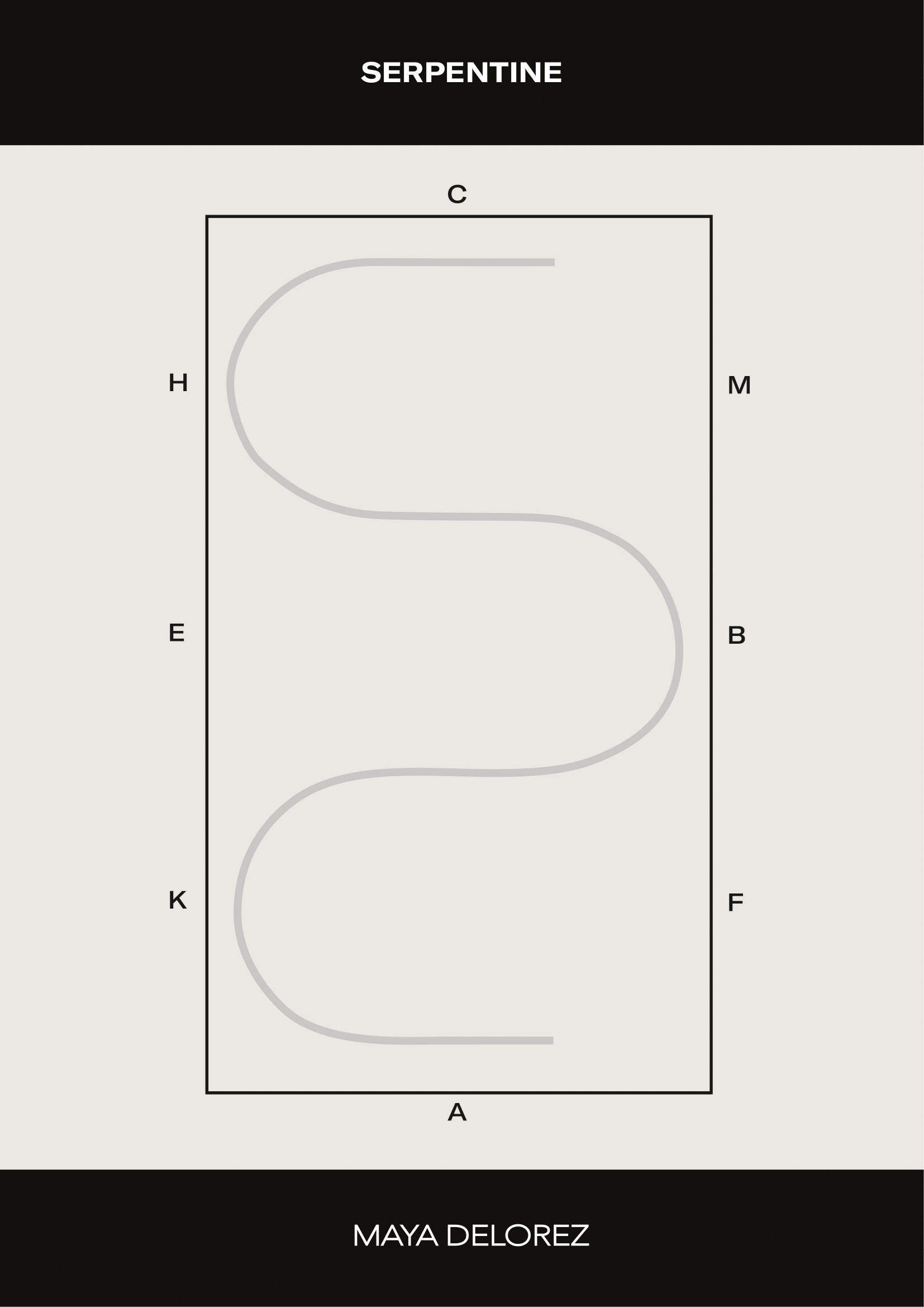Learn the most important
Riding Figures
In this guide, you'll find illustrations and explanations of some of the most common riding figures. You can also download the guide as a PDF.
Amanda
Fri 29 Sep - 23
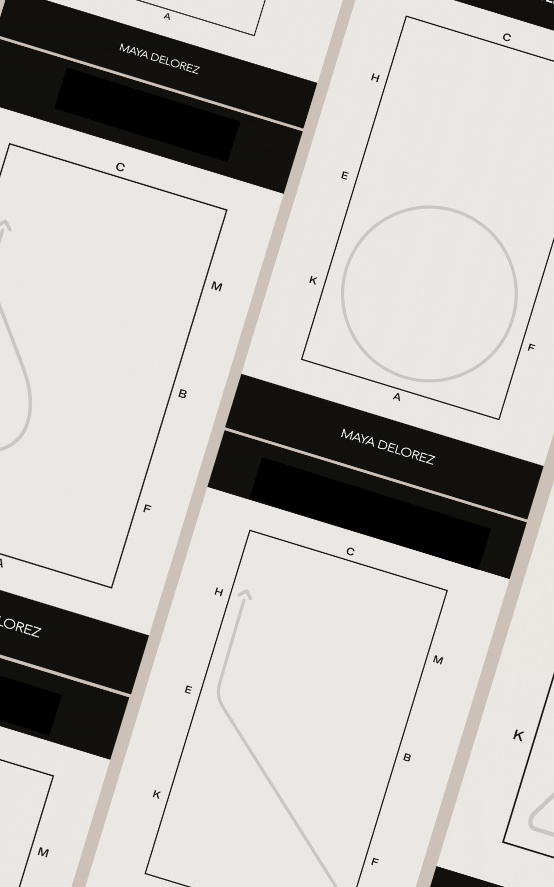
Learn the most important
Riding Figures
In this guide, you'll find illustrations and explanations of some of the most common riding figures. You can also download the guide as a PDF.
Amanda
Fri 29 Sep - 23
Circles, voltes, serpentines – riding figures are something you've likely encountered, no matter if you're a novice or a pro. They help you vary your riding in the arena, and they also form the building blocks of many jumping exercises and dressage routines. While it's hard to map out exactly how many riding figures there are, in this article, we've compiled some of the most common ones. Check them out!
💡 Did you know?
Depending on where in the world you’re from, you might know riding figures by another name: School(ing) figures, ring figures, arena figures or arena exercises… However, they all mean the same: They’re prescribed paths a horse is ridden on in a riding arena, usually for training purposes.
Down the centerline
Ride along the rail of the arena, and when you reach the midpoint on the short side of the arena, turn and ride down the centerline. Follow a straight line and ride over to the opposite short side. Then, turn back onto the rail, either changing rein or continuing on the same one.
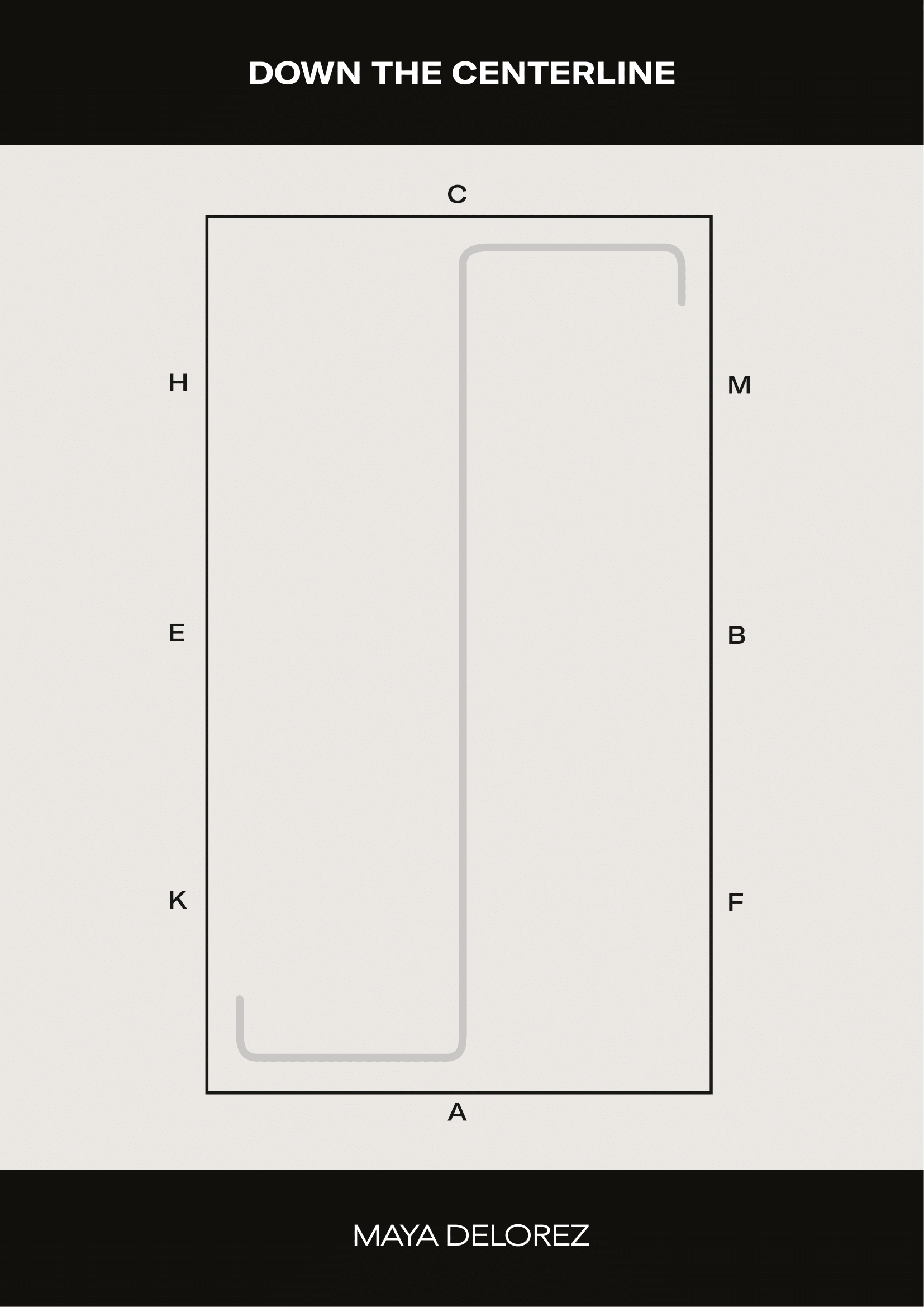
Across the short center line
Ride along the rail of the arena, and when you reach the midpoint on the long side of the arena, turn and ride toward the center. Keep going in a straight line until you reach the opposite long side of the arena. Then, turn back onto the rail, either changing rein or continuing on the same one.
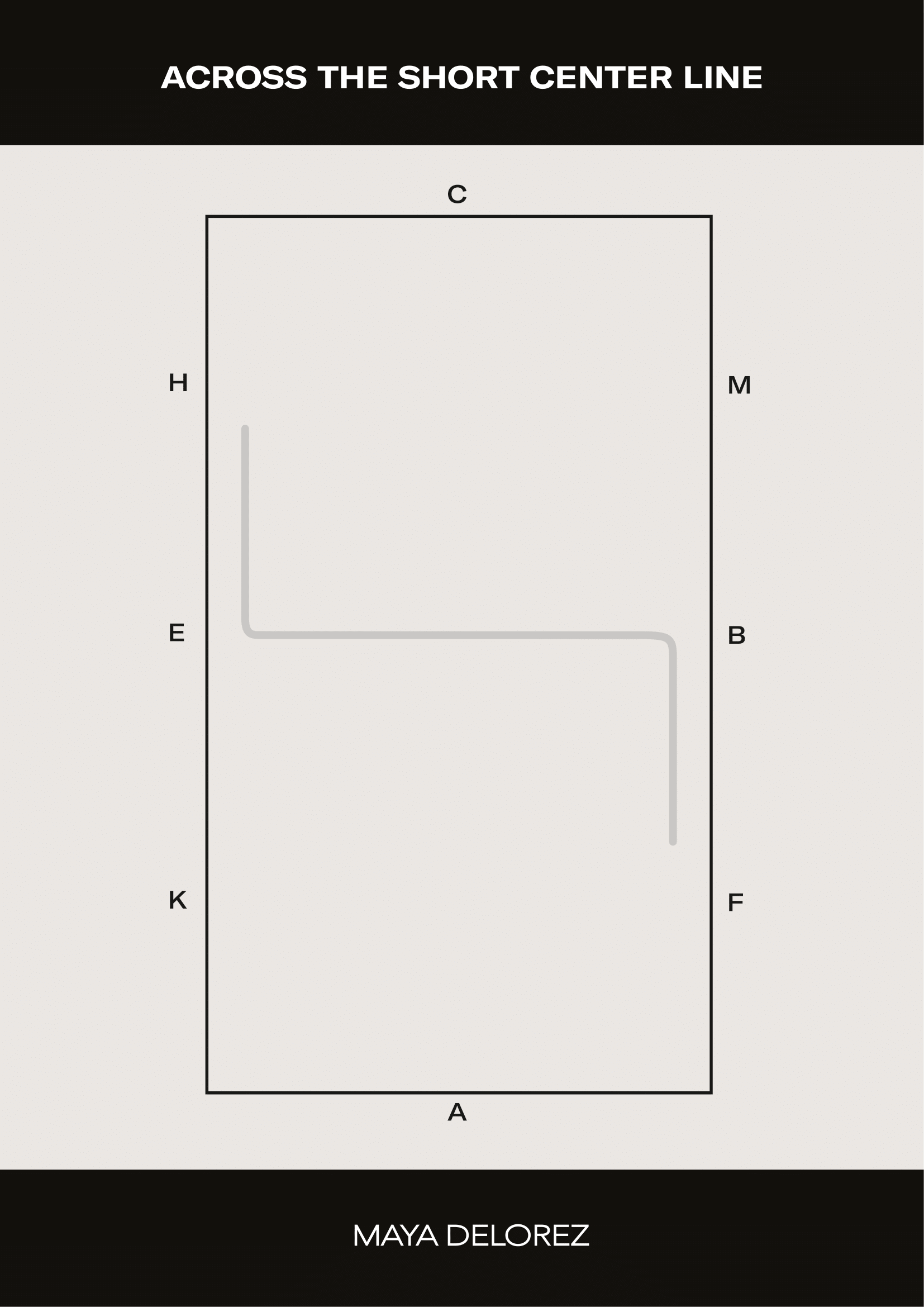
Across the long diagonal
When crossing the long diagonal, you essentially ride from one corner to another. Start by riding a deep corner, and then at points H, M, K, or F, turn away from the wall and ride diagonally across the arena. Your line should be straight, and you always change rein when crossing the long diagonal.

Across the short diagonal
Riding across the short diagonal is very similar to crossing the long diagonal, but instead of corner to corner, you ride back onto the rail at the midpoint of the opposite long side. Your line should be straight, and you always change direction when crossing the short diagonal.
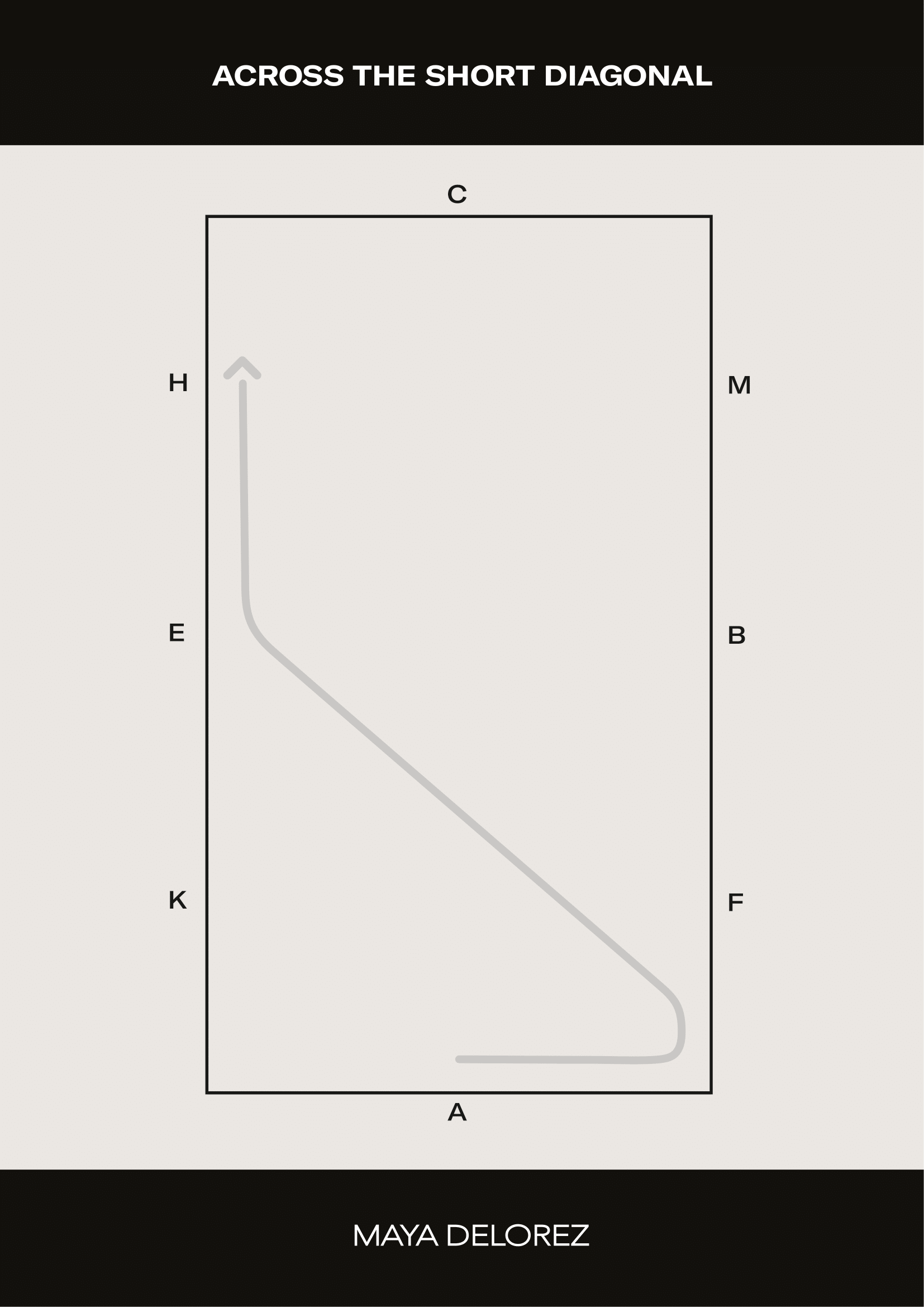
Half-volte to wall ("Teardrop")
Also known as "teardrop" due to its shape, in this figure you perform a half-volte from the midpoint of one short side of the arena, before gradually coming back to the midpoint of the long side you just came from. A nice way to vary your rein changes!
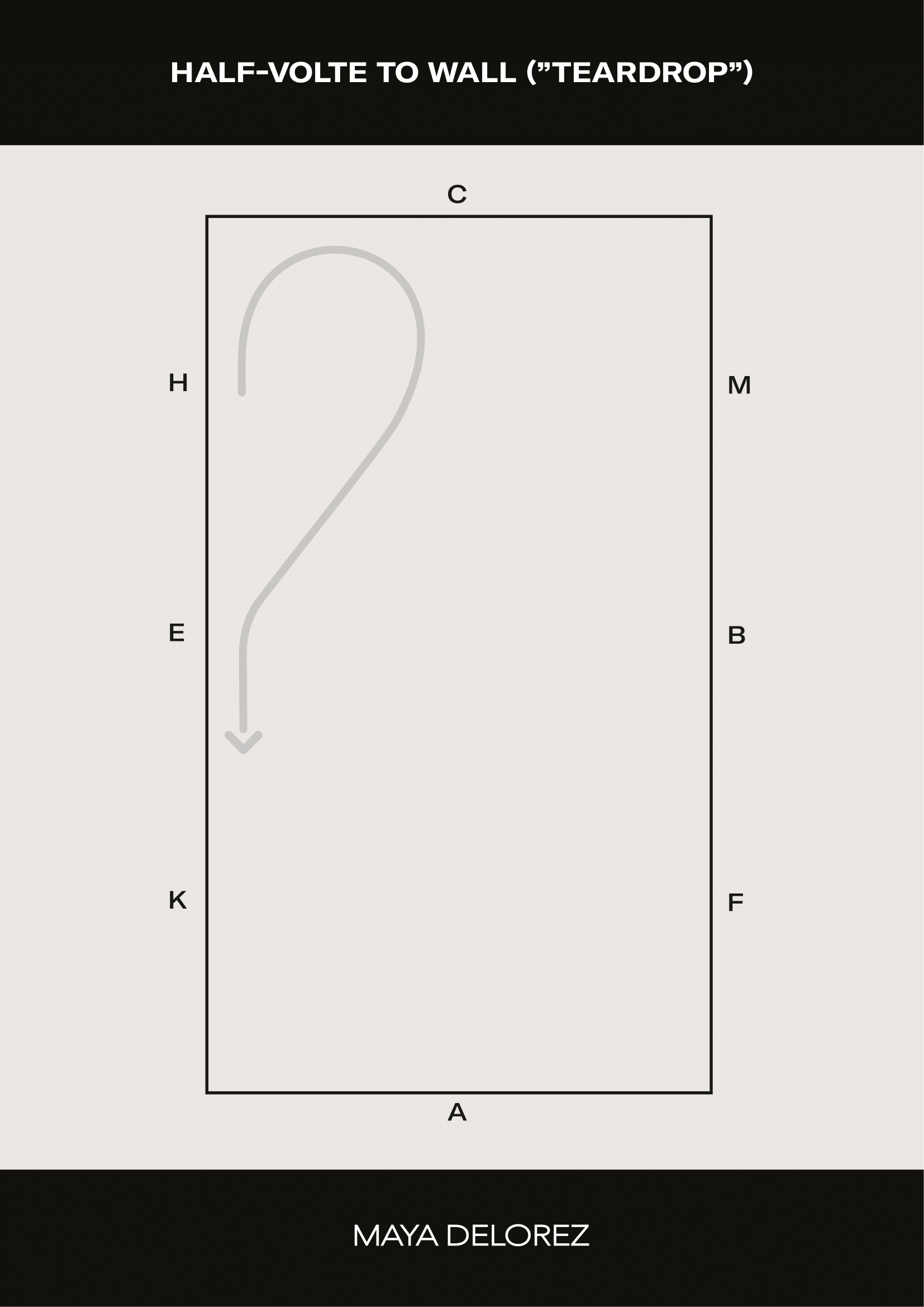
Circle
The circle is one of the most fundamental training figures. The most common is a 20m circle, with starting points C or A.
💡 Good to know: Each circle has an open and a closed side: The open side is the half of the circle towards the center of the arena, the closed side is the half that's closest to the wall.

Volte
The volte is a very small circle. Of all the circles, it requires the most balance from the horse. The size of the circle can vary depending on the arena's dimensions, but a general rule is not to let the volte cross the centerline. The volte should start and end at the same point and be entirely round. After completing a volte, you always continue in the same direction.
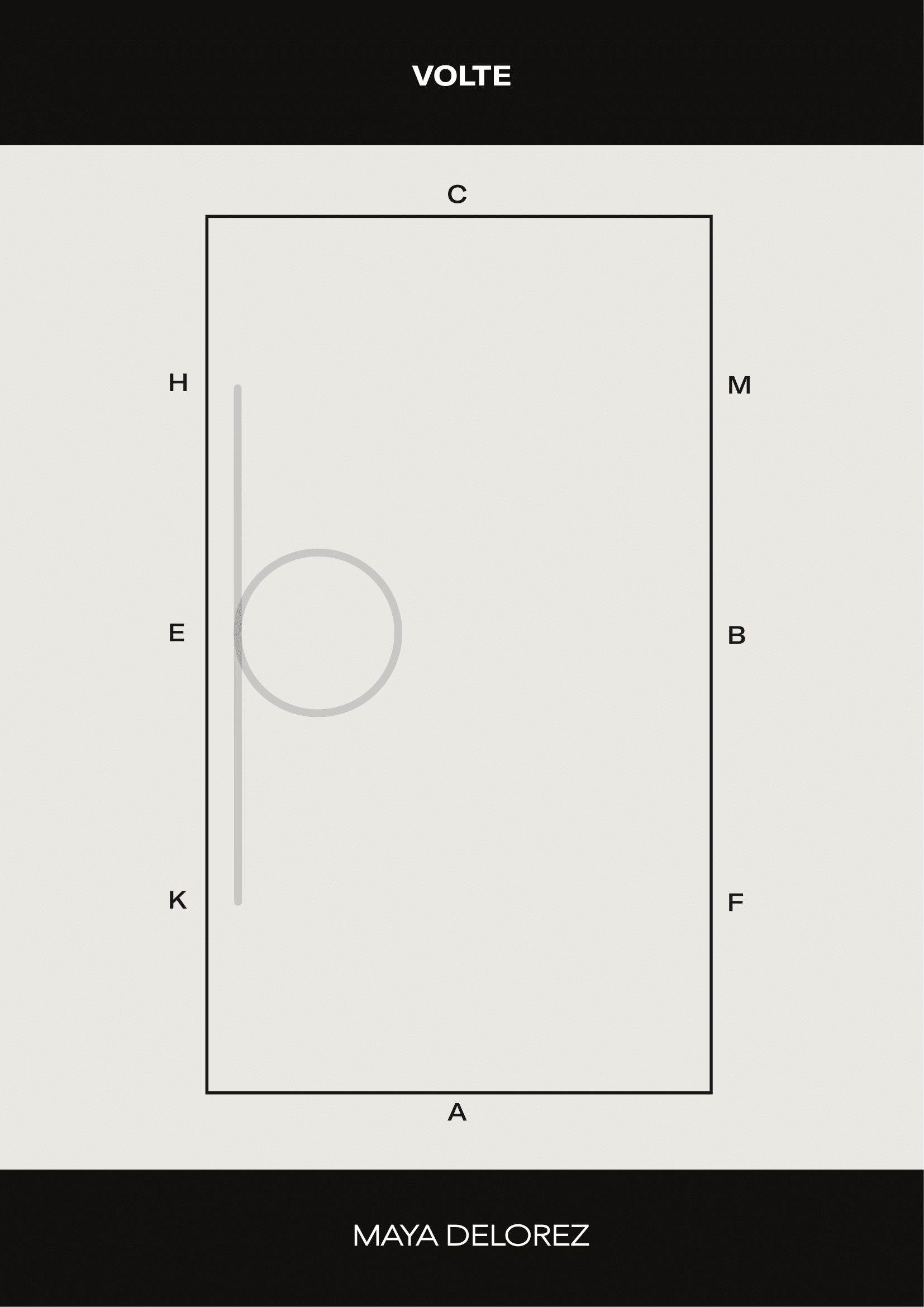
Reverse half-volte
Riding a reverse half-volte is similar to riding a volte initially, but when you've ridden half of the volte, you continue toward the wall in the opposite direction. In short, you ride a half-volte and change the rein.
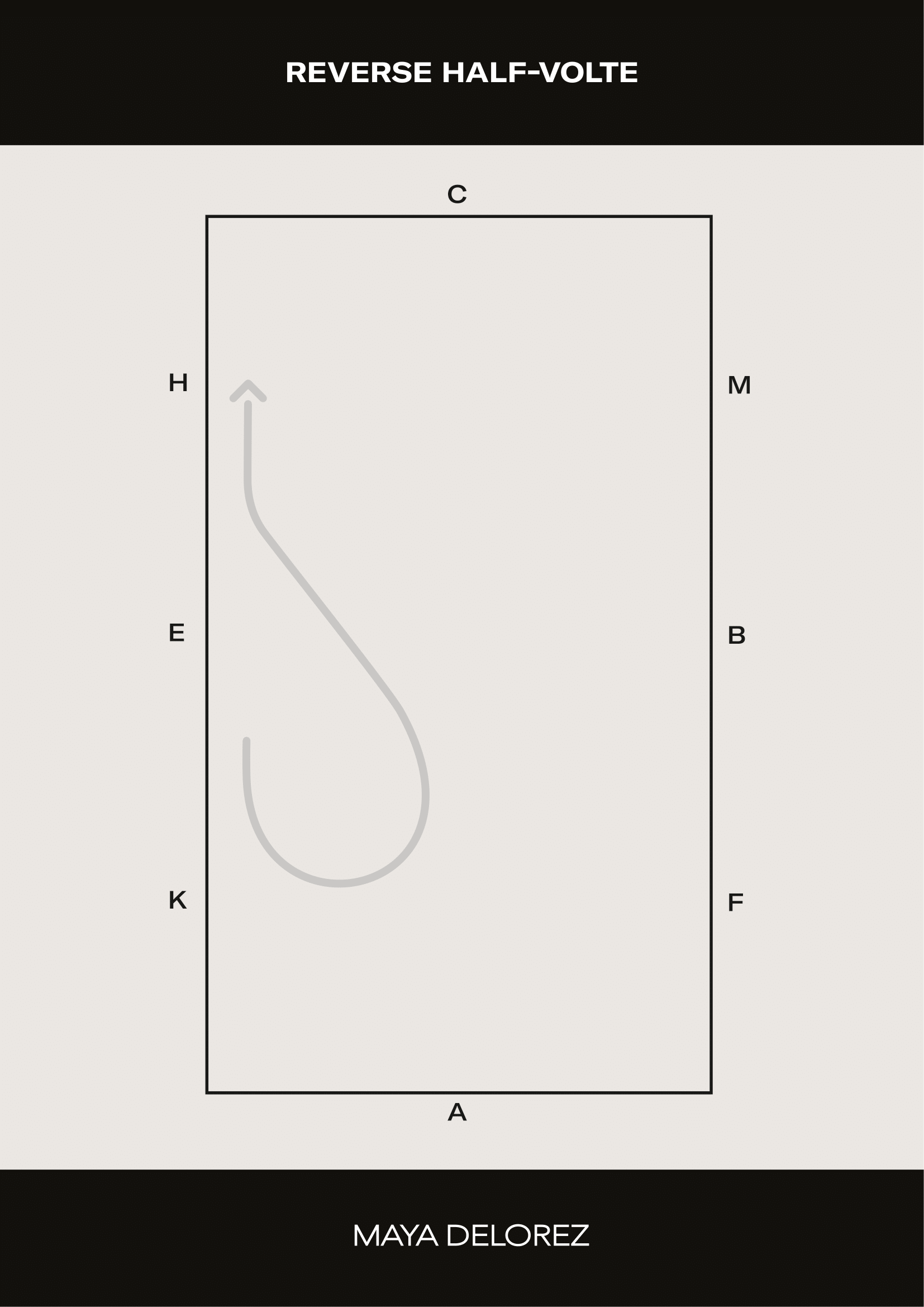
Serpentine
Riding serpentines involves riding back and forth across the entire arena in smooth loops. The number of loops can vary, but it's most common to ride three to four loops. The loops should be of equal size and shape to the others in the serpentine. Depending on how many loops you ride, the serpentine can be used to change the rein: If you ride an even number of loops, you will end up on the opposite rein.
